As an extension to our What does a VFX Artist do? article – this time we would like to look further into the sub topic Modelling. So, what does a Modelling Artist do?
3D modelling artists create the models for all 3D assets within a project – characters, weapons, vehicles, furniture, trees, rocks and so on. They often start with a brief or 2D drawing from a concept artist and build their 3D models from that.
Sometimes 3D modelling artists will specialise in a certain area, depending on the individual game studio or project requirements. Because of that, they can be called environment artists, character artists or vehicle artists. In other studios, 3D modelling artists can be responsible for modelling several types of art asset or a whole level.
Environment Artist –
Being an environment artist is the craft of building CG worlds. The environment artists’ role can be divided into two: asset creation and layout – both require the artist to have a good understanding of lighting and textures. It’s become common to spit these two elements into a level design role and an environment artist role to achieve even greater job specialisation.
Character Artist –
A character artist is somebody whose primary job is making characters and creatures. The foundation for all character art is figure sculpting. Everything else, from topology, UVs, shading, etc. is secondary to solid figure sculpting. A character artist isn’t an entry-level position. While there are junior character artist positions, the people who get these jobs are usually already highly skilled artists who have been doing character work for years already.
Vehicle Artist –
As a vehicle artist, it’s likely that your portfolio will be a cross-over between cars, spaceships, weapons or robots, etc. It’s important for the artist to have a solid understanding of real-world industrial vehicle design and hard surface assets in general to be able to communicate this in their work.
Where Do 3D Modellers Work?
You will find 3D modellers in a variety of different sectors such as:
- film and video production studios
- game design companies
- advertising and graphic design firms
- retail firms
- web design firms
- software companies
- architecture firms
- real estate companies
- crime labs (forensics)
- laboratories (both science and medical)
- colleges and universities
- product design firms
- environmental agencies
- manufacturing firms (retail, home, tools, etc.)
- aerospace companies
- interior design firms
- automotive companies
- government agencies
- building technology firms
And the list goes on!
Different types of modelling
With the vast spread of sectors that modellers find themselves in, comes an array of different techniques that make up the art form as we know it today.
Box Modelling –
Box modelling is a popular technique in 3D modelling where an entail shape is manipulated into the basic shape of the final model.
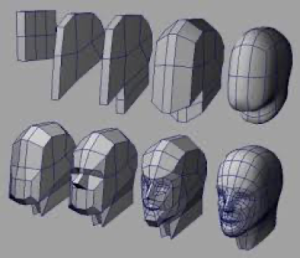
Polygon modelling –
Polygonal modelling is another approach for modelling objects by approximating their surfaces using polygon meshes. This form of modelling is well suited to method for real-time computer graphics.
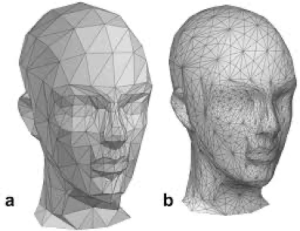
Nurbs Modelling –
NURBS modelling (otherwise known as Non-Uniform Rational Basis Spline) is a model commonly used in computer graphics for generating and representing curves of surfaces.
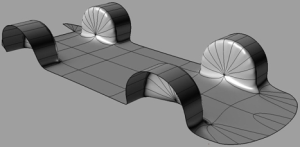
Curve Modelling –
Curve modelling is a 3D modelling method that relies on curves which are influenced by weighted control points to generate surface geometry.
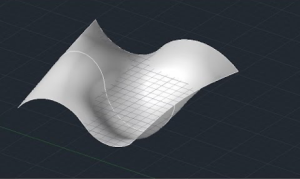
Digital 3D sculpting –
Digital sculpting (also known as 3D sculpting) is the use of software tools that allow you to manipulate a digital object as if it were clay. Just like as if it was made from a real-life substance you can you push, pull, smooth, grab, pinch the surfaces your creating.
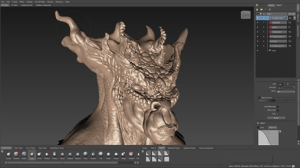
Photogrammetry –
Photogrammetry is the process of making multiple photographs overlap in order to take measurements, which then helps with creating 3D models of scenes/objects.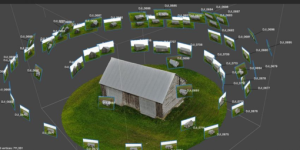
Simulation –
Simulation modelling is when you create and analyse a digital prototype of a model to predict its performance and understand what might happen in real life. This technique is used to help designers and engineers understand what conditions a model can and cannot withstand or how they might react.
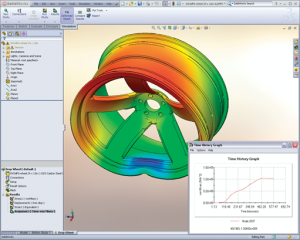
Procedural Modelling –
Procedural modelling is a term for creating 3D models and textures from different sets of rules. It’s actually an umbrella term for a number of techniques in computer graphics that are defined by their use of algorithms. Great examples are: L-Systems, fractals or generative modelling.
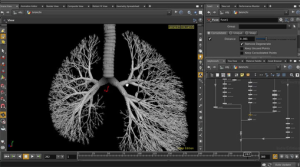
Boolean Modelling –
Boolean Modelling is a term used when combining or subtracting objects from each other to create new shapes/models. This technique is a great shortcut so is worth learning early in your modelling career!
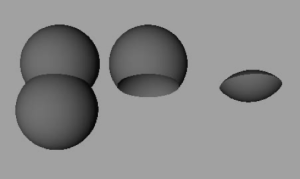
If you are starting out your career in VFX and are looking to further your knowledge, these techniques are definitely worth doing some research into. Blogs, tutorials, webinars – any kind of learning you can get your hands on will be worthwhile.
Now that you know the types of modelling artist there, the sectors they work in and the techniques they use, you should be well equipped for starting your journey through VFX.
Any questions, let us know! We’d love to hear from you. Start the conversation by reaching out to us – info@yellowcat.london